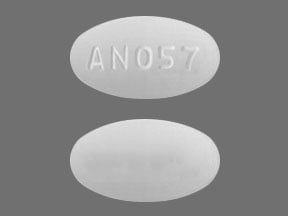
Raloxifene Coupons & Savings Card – Discount Prices from $34.32
Generic for: Evista
My prescription
Edit
60MG, Raloxifene (90 Tablets)
Select pharmacy

CVS
$35.81
COUPON PRICE
Walmart
$34.32
COUPON PRICE
Walgreens
$39.60
COUPON PRICE
Albertsons
$45.26
COUPON PRICERaloxifene savings card
Show this card to your pharmacist
Walmart
$34.32
BIN
ID
PCN
GRP
019876
LHE39CAA50
CHIPPO
LHX
Powered by
More prescriptions for osteoporosis
More prescriptions for osteoporosis
Raloxifene dosage forms
Dosage Quantity Price from Per unit 60MG 90 Tablets $34.32 $0.38 60MG 1 Tablet $2.78 $2.78 60MG 30 Tablets $10.94 $0.36 60MG 50 Tablets $16.57 $0.33 60MG 60 Tablets $19.38 $0.32 60MG 100 Tablets $36.90 $0.37 60MG 300 Tablets $58.70 $0.20 60MG 500 Tablets $80.50 $0.16 60MG 1000 Tablets $135.00 $0.14 60MG 2000 Tablets $244.00 $0.12
| Dosage | Quantity | Price from | Per unit |
|---|---|---|---|
| 60MG | 90 Tablets | $34.32 | $0.38 |
| 60MG | 1 Tablet | $2.78 | $2.78 |
| 60MG | 30 Tablets | $10.94 | $0.36 |
| 60MG | 50 Tablets | $16.57 | $0.33 |
| 60MG | 60 Tablets | $19.38 | $0.32 |
| 60MG | 100 Tablets | $36.90 | $0.37 |
| 60MG | 300 Tablets | $58.70 | $0.20 |
| 60MG | 500 Tablets | $80.50 | $0.16 |
| 60MG | 1000 Tablets | $135.00 | $0.14 |
| 60MG | 2000 Tablets | $244.00 | $0.12 |
Raloxifene Warnings
Raloxifene is a medication that requires careful consideration before use due to its potential risks and specific precautions. Please review the following important safety information and consult your healthcare provider with any questions or concerns:
Risk of Blood Clots and Stroke: Raloxifene can increase the likelihood of developing blood clots, particularly during the first four months of treatment. These clots can result in serious complications, such as strokes. Avoid using raloxifene if you have a history of blood clots, strokes, or "mini-strokes" (TIAs). Also, those at risk for heart disease, with high blood pressure, atrial fibrillation, or who smoke should exercise caution.
High Triglyceride Levels: If you have a history of elevated triglyceride levels, particularly from previous estrogen treatments, raloxifene may further increase these levels. Regular blood tests may be required to monitor triglyceride levels during treatment.
Breast Cancer Monitoring: While raloxifene can help reduce the risk of breast cancer, it does not eliminate it entirely. Continue to perform regular breast self-examinations and schedule mammograms. Report any unusual changes in breast shape, size, or color to your healthcare provider.
Interaction with Warfarin: If you are taking warfarin (Coumadin), inform your healthcare provider, as raloxifene can increase the risk of bleeding. You may need additional blood tests to ensure safe warfarin levels. Report any unusual bleeding, like prolonged nosebleeds or severe bruising, to your provider.
Contraindications: Do not use raloxifene if you are currently pregnant or have a history of blood clots. Discuss any of these conditions with your healthcare provider before starting treatment.
By following these guidelines and maintaining open communication with your healthcare provider, you can help manage the risks associated with raloxifene.
Raloxifene Side Effects
Common side effects:
- joint pain
- flu-like symptoms
- hot flashes
- bronchitis
- runny nose
- cough
- headache
- nausea
- sinus infections
- leg cramps
- diarrhea
- swelling in the arms or legs
Less common but important to monitor:
- vertigo
- sweating
- fever
- vomiting
- nerve pain
- urinary tract problems
Serious side effects:
- signs of a blood clot (sudden pain, swelling, redness, or warmth in the leg or arm, chest pain, difficulty breathing, coughing up blood)
- signs of a stroke (sudden weakness on one side of the body, trouble speaking, sudden vision changes)
- serious allergic reaction (rash, itching, swelling, severe dizziness, trouble breathing)
Raloxifene Interactions
Interactions with moderate risk that may require dose adjustment, closer monitoring, or timing changes:
- bile acid-binding resins (such as Cholestyramine, Colestipol)
- estrogens
- tibolone
